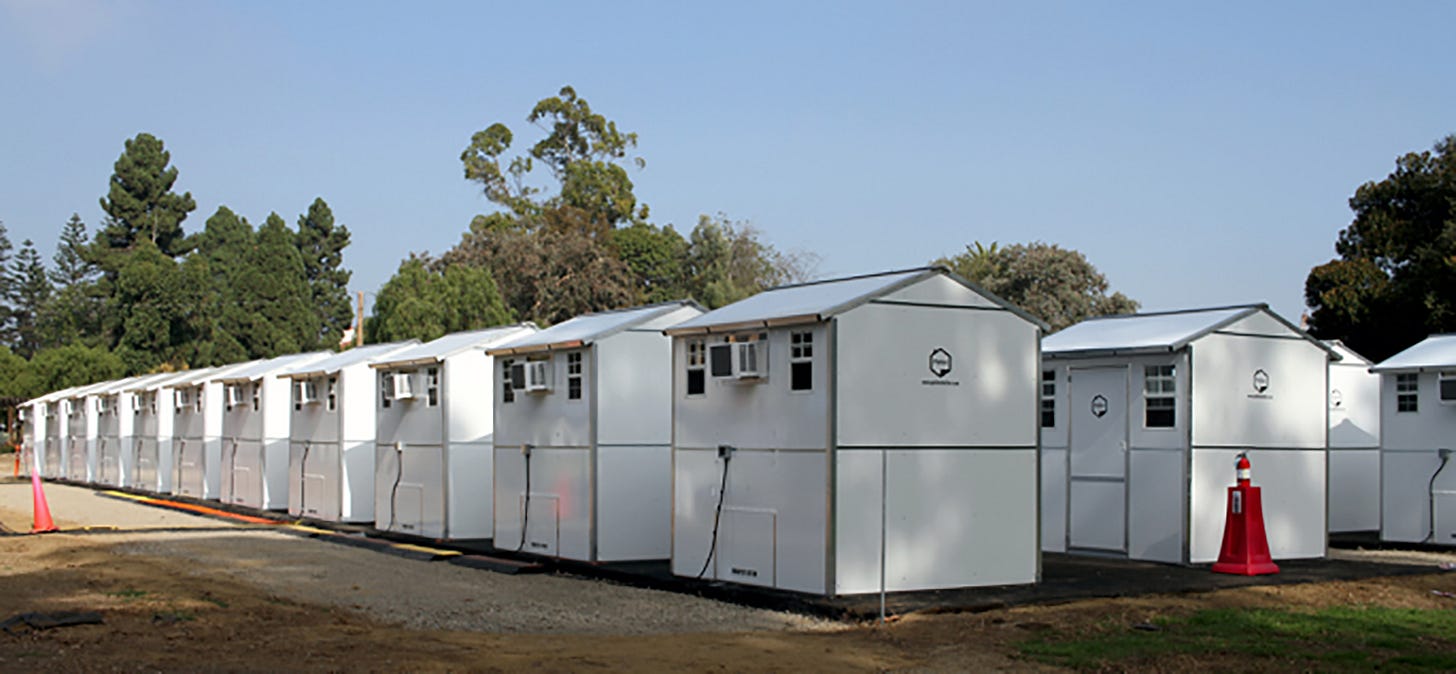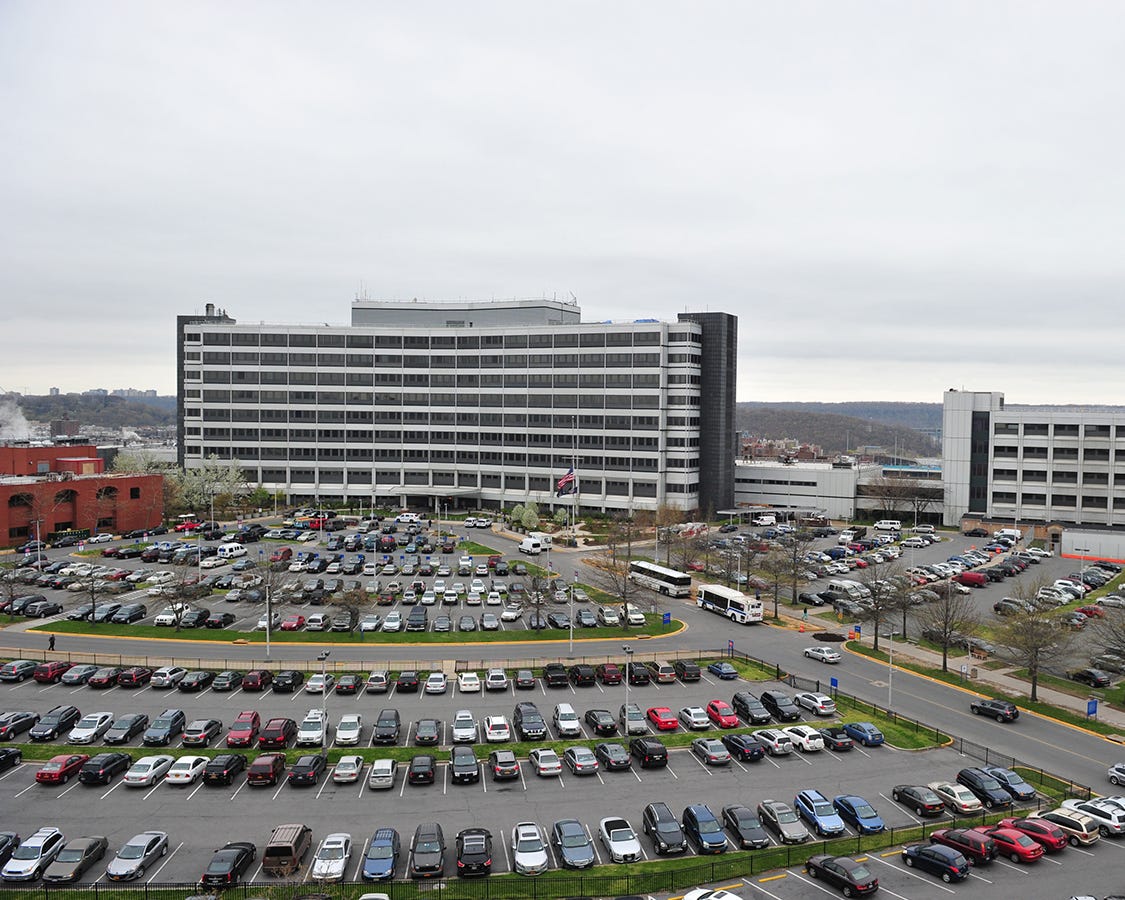The Federal Government Owns a Lot of Land. We Should Use it to Build Housing.
The Federal Government has one simple trick to build a ton of housing: immunity to local zoning
The Federal Government owns land all across the country. While most people only think about things like national parks and big agencies in Washington DC, that’s just scratching the surface. The Federal Government manages a lot of land for all kinds of purposes: every post office, VA hospital, Social Security office, and courthouse is managed by the federal government. We should use this land to build housing. A lot of housing.

The Story of the Los Angeles Veterans Affairs Campus
This idea was inspired by a recent trip to Los Angeles. I was walking by the sprawling VA campus (it’s half the size of Central Park) in West LA. It’s in one of the most desirable neighborhoods in the city that will soon have access to the Purple Line metro that is currently under construction. Recently, the LA VA built tiny homes for homeless veterans on their campus, which seems like a decent idea to tackle homelessness amongst veterans. But the more I thought about it, the less sense it made. This is federally-owned land in one of the most desirable parts of the country. There are nearly 4,000 homeless veterans in LA. Why are we building a few dozen tiny houses when we could be building thousands of real homes?
As I dug deeper into the issue I found out that the VA is already starting to build some housing for homeless veterans, particularly in LA. While this is a good first step, the scope of this is far too small and poorly designed. The biggest issue? The buildings are too small. They’re 3-story mid-rise apartments. An additional issue? They’re too expensive to build. These buildings are not new, they are simply renovated vacant buildings, and yet each apartment costs almost $600,000 to build. Thankfully, there’s a creative solution:
Build mixed-income housing on federal land!
The federal government has a helluva trump card when it comes to building housing: it’s immune from municipal zoning thanks to the Supremacy Clause of the Constitution. As a result, the federal government essentially has carte blanche to build as much housing as it wants, wherever it wants. Additionally, the recently-passed PACT Act enhances the ability of the VA Secretary to leverage the VA’s unique public-private partnership program called the Enhanced-Use Lease (EUL) program to develop housing that benefits Veterans.
There’s a huge opportunity for the federal government to get creative here: instead of spending more than half a million dollars on each home, they can build far more housing with less funding by making the housing mixed-income with an integrated community of formerly unhoused and higher-income tenants. Basically, the government will become a housing developer. But instead of operating with a profit motive, the government’s motive would be housing as many Veterans as possible.

This is commonplace internationally: instead of having concentrated poverty with entirely low-income buildings (as is common in the US and one of the reasons our public housing stock is in such poor condition), the government can build mixed-income buildings where wealthier tenants pay market-rate rent and subsidize the rents of lower-income tenants, who would be homeless veterans in this case. Combining mixed-income housing with immunity from local zoning restrictions is an extremely powerful tool: it means that instead of building a small 60-unit apartment for homeless veterans, the government could build a dense 500-unit apartment, with half of the homes reserved for homeless veterans and the other half being market- rate. This would result in far more housing for veterans at a much lower cost, enabling the program to scale much quicker and house far more Veterans who are currently unhoused. An additional benefit here is community integration: previously homeless veterans would be neighbors with higher-income tenants rather than living in concentrated poverty.
The possibilities at the VA alone are massive. There are huge VA campuses in every major city with a housing shortage. And most of them are surrounded by hundreds of parking spots. The above VA center in The Bronx has a bus stop on its campus and is within walking distance from a Metro North line and multiple subway stops. The VA could easily put that parking underground for those who really need it and then build thousands of apartments on top, with priority given to homeless veterans. A quick Google search shows VA hospitals with good transit access and underutilized land all across the country, from Queens to Chicago to Boston to Atlanta to Minneapolis to San Francisco to Seattle to Dallas to San Deigo. Seriously, click on some of those links to see just how much opportunity there is here. Surface parking lots are one of the least efficient possible uses of land and should be replaced with housing that provides far more value for veterans who rely on the VA. The value of this housing would be even greater when you consider the fact that many veterans are disabled and can have difficulty easily getting to VA hospitals for care, and living directly on campus would make their lives significantly easier on that front.
The federal government is already experimenting with something similar in San Diego, where the Navy is letting a developer build thousands of homes on Navy land (where they are exempt from local zoning) in exchange for the developer also building new offices for the Navy’s cyberwarfare division. As a result, the Navy is saving billions of dollars by essentially getting new a brand-new cyberwarfare office for free, and San Diego is winning because the city will have more housing at zero cost to taxpayers. This shows that there are already one-off projects following this model, where the value creation from zoning immunity can flow back to the government (in this case, through new offices, rather than low-income housing). What we need to do is rapidly scale this up and systematize a process for hundreds of government properties.
Beyond the VA
The VA is an obvious place to start thanks to the PACT Act, the amount of land the VA holds in desirable locations, the number of homeless veterans, and the fact that many veterans rely on public transportation. Additionally, housing for veterans is one of those bipartisan issues that is popular with Democrats and Republicans.
But the VA is just the start. Every single federally-owned parking lot in a city should be turned into dense, mixed-income housing. The same goes for single-story post offices that could be turned into mixed-use high-rises. There’s so much underutilized federally-owned land out there, and the federal government has a unique ability to bypass all local zoning restrictions and arbitrary review processes and just get things built, quickly. Since the government already owns most of this land, is immune from local zoning reviews, and has a nearly-infinite pool of cheap financing, they could move much quicker than the private sector. And given the scale of our housing crisis, it would likely be a political winner as well.
We can even go beyond just the federal government here: states are also generally immune from municipal zoning and can adopt a similar strategy. You can already see this in California with a recent bill that allows BART to build dense housing on its own land, giving it an exemption from local zoning restrictions. Taking this a step further, California is currently considering AB309, which would enable the state to construct mixed-income housing on its own and bypass local housing restrictions. (if you live in California, call your State Senator and ask them to support the bill!). Once you factor in all state-owned land, the construction opportunities are massive. Think about every DMV, university, and state office building with large surface parking lots that could be turned into dense housing. Again, there are one-off proposals already exploring turning underutilized state land into housing, but states should be scaling up and systematizing this process to get a lot of housing built, and quickly. With high interest rates threatening to slow down homebuilding, now is the perfect time to do it and give construction workers long-term job stability.
While in an ideal world, many of these municipalities wouldn’t have exclusionary zoning and onerous discretionary review processes stopping housing from being built, the federal (and state) government shouldn’t take a passive role. Instead, they should use their special status as zoning-exempt organizations to build the housing we need, quickly.




